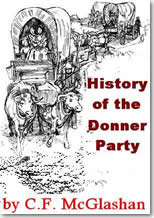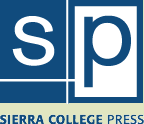Lewis Keseberg of the Donner Party
Prior to the discovery of gold at Coloma that sparked the California Gold Rush, stories of the splendid opportunities in what was considered a pastoral paradise had filtered back across the Plains. Especially when the Oregon Country saw a burst of migration in the early 1840s, neighboring California appeared an inviting alternative. It certainly seemed so to the Donner Party.
In the summer of 1846, the Donner Party left Missouri headed to California. The party started too late in the season, was burdened with overloaded wagons, possessed inadequate or inaccurate route information, and was hampered by bickering participants.
Arriving at the Sierra Nevada as the early winter snows were falling, the party was marooned. Shivering in roughhewn cabins, the emigrants quickly began to starve and some resorted to cannibalism before being rescued. The story of the Donner Party’s travails at the now newly renamed Donner Pass was a sensation of the time. It was described in numerous newspaper and journal accounts. But many versions were contradictory or merely sensationalized fiction. Someone was needed to sort out the details and provide a comprehensive and accurate narrative. That someone was Charles McGlashan.
Charles McGlashan provides the narrative
 It was 1877. McGlashan lived in Truckee, the town nearest Donner Pass. He was also the publisher of the town newspaper, The Truckee Republican. McGlashan decided to collect information about the Donner episode and write a book. Announcing that he would serialize the book in his newspaper before he had completed even one second of research, McGlashan found the effort immediately overwhelming. He interviewed twenty-four of the remaining twenty-six survivors, obtained more than 2,000 letters, diaries, and firsthand recollections, poured over the previous accounts, and talked to the families to gain important secondary information. Completing this monumental effort in only eighteen months, McGlashan’s History of the Donner Party (1879) was immediately successful. It would have twelve printings and is still considered the most important source of information on the Donner tragedy.
It was 1877. McGlashan lived in Truckee, the town nearest Donner Pass. He was also the publisher of the town newspaper, The Truckee Republican. McGlashan decided to collect information about the Donner episode and write a book. Announcing that he would serialize the book in his newspaper before he had completed even one second of research, McGlashan found the effort immediately overwhelming. He interviewed twenty-four of the remaining twenty-six survivors, obtained more than 2,000 letters, diaries, and firsthand recollections, poured over the previous accounts, and talked to the families to gain important secondary information. Completing this monumental effort in only eighteen months, McGlashan’s History of the Donner Party (1879) was immediately successful. It would have twelve printings and is still considered the most important source of information on the Donner tragedy.
Interviewee Lewis Keseberg
Among those Charles McGlashan interviewed was the most infamous figure of the episode -- Lewis Keseberg. It was Keseberg who was reported to be the first to resort to cannibalism. Furthermore, it was speculated that Keseberg had precipitated the deaths of the six weakest party members, including several children, in order to consume their flesh. It was rumored that Keseberg had confided that he preferred the taste of human flesh over California beef. Keseberg denied it all. He sued for slander those who had accused him of this gruesome behavior. The judgment in the defamation case was muted. Keseberg was granted $1 in damages -- but had to pay the court costs. Despite Keseberg’s protests, the accusers were numerous and convincing. Most observers feel that Keseberg was guilty of these atrocities, but no formal findings of guilt or innocence were ever issued.
Charles McGlashan interviewed Keseberg twice. McGlashan concluded that Keseberg had not murdered the young boy Tamsen Donner and of, in McGlashan’s words, “his comparative blamelessness in many other matters.” Few agreed with this conclusion.
Lewis Keseberg died in 1895 at age 81. Almost every obituary mentioned “Keseberg” and “cannibalism” in the same breath.
Keseberg’s statement and interview with McGlashan are reproduced here.
